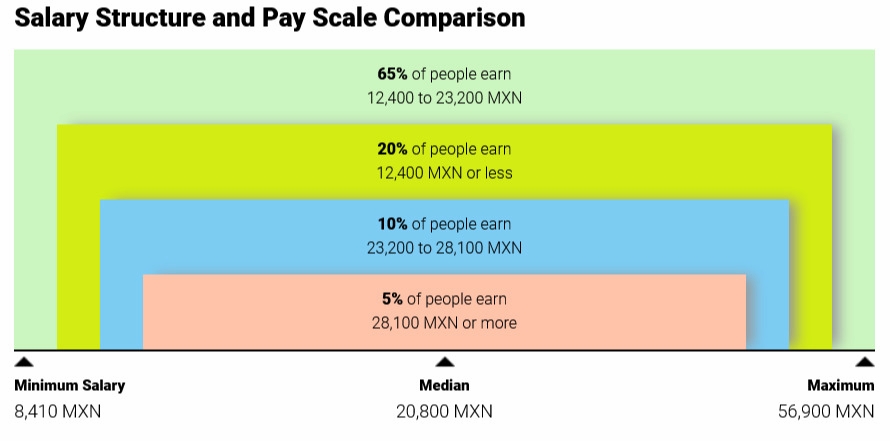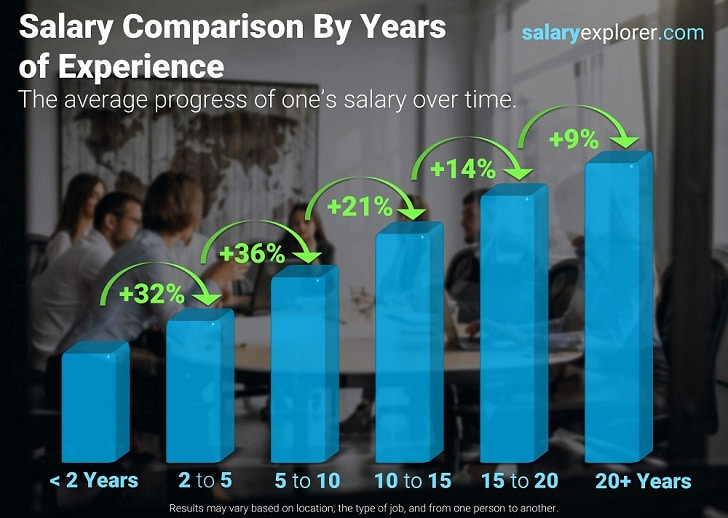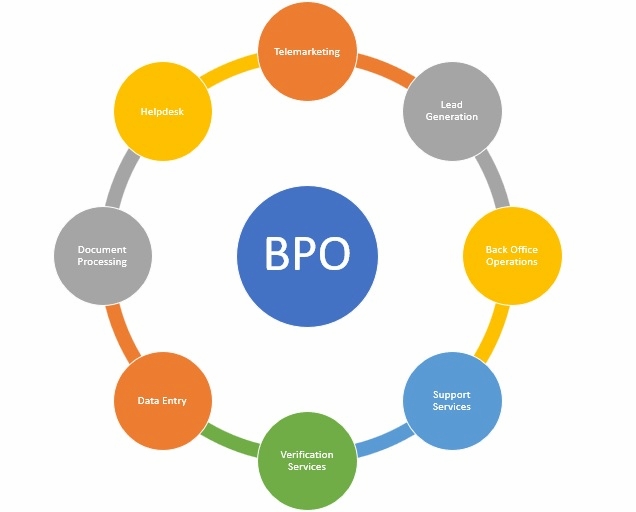The average monthly salary in Mexico is an important indicator of the economic health of the country and the well-being of its people. It is a key metric that helps us understand the standard of living for the average Mexican worker, as well as the level of development of various industries and sectors within the country. By analyzing the average salary in Mexico, we can gain insights into factors such as inflation, economic growth, and the cost of living.
In this article, we will explore the average monthly salary in Mexico in more detail, including the factors that influence it, what is shift work‘s place in it, the industries with the highest and lowest salaries, and how it compares to other countries and their average working hours and salaries around the world.

What Is the Average Salary in Mexico?
As of 2023, the median salary in Mexico is approximately 29,200 MXN (USD 1,695/month).
The median income in Mexico is typically measured in pesos and varies widely depending on various factors.
This figure may be lower than that of other countries, but it’s important to take into account that the cost of living in Mexico is generally lower than in many developed countries. Additionally, there are various factors that influence the average salary in Mexico, such as education level, years of experience, and the specific industry and job role (for example, part-time vs full-time).
Some industries such as finance, IT, and manufacturing offer higher average salaries than others. Generally, the average weekly salary in Mexico is around 4,500 pesos, while the average annual salary is approximately 205,000 pesos. It’s important to note that these figures may vary depending on the specific job and location within Mexico.
Factors that influence the average salary in Mexico
The average salary in Mexico per month is influenced by a variety of factors. One of the most important factors is education level, with higher education typically leading to higher-paying jobs. Years of experience in a given field can also impact the average salary, as more experienced workers are often paid more than those who are just starting out. The specific industry and job role are also significant factors, as some industries such as finance, IT, and manufacturing tend to offer higher average salaries than others.
Geographic location can also play a role, as salaries can vary depending on the cost of living in a particular area. Overall, the average salary in Mexico is influenced by a complex interplay of various factors, and understanding these factors is crucial to gaining insights into the economic health of the country and the well-being of its people. Take a look at the salary structure in Mexico and how it’s distributed among its working population.

Average annual salary increase in Mexico
According to data from the National Institute of Statistics and Geography (INEGI), the average nominal annual salary increase in Mexico in 2020 was 4.1%. This was slightly lower than the average annual salary increase in 2019, which was 4.5%.
However, it’s worth noting that the COVID-19 pandemic had a significant impact on the Mexican economy in 2020, which may have contributed to the lower average annual salary increase. In particular, many companies were forced to reduce salaries, stick to the remote work, or lay off workers in response to the economic downturn caused by the pandemic.
When looking at average annual salary increases in Mexico over a longer time period, the picture is somewhat mixed. According to INEGI data, the average annual salary increase in Mexico has ranged from around 3% to 5% in recent years, with some fluctuations depending on the overall economic climate.
| Working areas | Average gross annual salary by survey (in MXN) |
|---|---|
| Administration | 265,144 |
| Agriculture, Food Industry | 252,398 |
| Arts & Culture | 282,281 |
| Banking | 405,048 |
| Car Industry | 320,634 |
| Chemical Industry | 328,726 |
| Commerce | 315,768 |
| Construction & Real Estate | 357,918 |
| Customer Support | 288,028 |
| Economy, Finance, Accountancy | 359,622 |
| Education, Science & Research | 297,293 |
| Electrical & Power Engineering | 339,294 |
| General Labor | 243,308 |
| Human Resources | 378,785 |
| Information Technology | 537,642 |
| Insurance | 340,244 |
| Journalism, Printing Arts & Media | 296,657 |
| Law & Legislation | 410,566 |
| Leasing | 479,812 |
| Management | 532,940 |
| Marketing, Advertising, PR | 356,468 |
| Mechanical Engineering | 327,937 |
| Medicine & Social Care | 290,935 |
| Mining, Metallurgy | 347,922 |
| Pharmaceutical Industry | 371,389 |
| Production | 295,375 |
| Public Administration, Self-governance | 338,754 |
| Quality Management | 375,527 |
| Security & Protection | 286,309 |
| Service Industries | 245,326 |
| Technology, Development | 449,701 |
| Telecommunications | 402,875 |
| Textile, Leather, and Apparel Industry | 206,351 |
| Top Management | 827,344 |
| Tourism, Gastronomy, Hotel Business | 252,570 |
| Translating, Interpreting | 314,514 |
| Transport, Haulage, Logistics | 281,359 |
| Water Management, Forestry, Environment | 315,901 |
| Wood Processing Industry | 270,808 |
The daily minimum wage in Mexico
The daily minimum wage in Mexico is set by the National Minimum Wage Commission (Comisión Nacional de los Salarios Mínimos, or CONASAMI), which is a government agency responsible for establishing and adjusting the minimum wage rates in the country.
As of January 1st, 2023, the daily minimum wage in Mexico is 185.56 pesos per day, which is equivalent to roughly $9.31 USD based on current exchange rates.
This represents an increase of 19% compared to the previous year when the daily minimum wage was 123.22 pesos per day.
It’s important to note that the daily minimum wage can vary depending on the geographic location and economic sector of the worker. CONASAMI sets different minimum wage rates for different regions and industries based on factors such as cost of living and productivity levels.
Despite the recent increases in the minimum wage, many workers in Mexico still earn low wages that are insufficient to cover their basic needs. According to data from CONEVAL, the Mexican government’s social development agency, around 41% of the Mexican population is living in poverty, and many of these individuals work in low-paying jobs with few benefits or labor protections.
In addition to the minimum wage, workers in Mexico are also entitled to other benefits and protections under Mexican labor law, such as paid vacation time, social security contributions, and protection against workplace discrimination and harassment. However, enforcement of these labor protections can be weak in some cases, particularly in the informal economy, where many workers are not covered by labor laws and regulations.
Industries With the Highest Average Salary in Mexico
Some industries in Mexico offer higher average salaries than others. For example, the finance industry is known to offer some of the highest salaries in the country, particularly in roles such as investment banking, financial analysis, and accounting. The IT industry is also a high-paying sector, with roles in software development, cybersecurity, and data analysis often commanding high salaries. The manufacturing industry is another sector that offers competitive salaries, particularly in fields such as automotive and aerospace manufacturing.
In general, industries that require specialized skills and expertise tend to offer higher salaries in Mexico. However, it’s important to note that the average salary in any given industry can vary widely depending on factors such as geographic location and years of experience, so it’s important to research specific job roles and industries carefully when considering potential career paths in Mexico.
Take a look at how salaries change with experience in the given field in Mexico.

Examples of companies in high-paying industries

There are several companies in Mexico that operate in high-paying industries and offer competitive salaries to their employees. In the finance industry, for example, Grupo Financiero Banorte is one of the largest financial institutions in the country and offers a range of financial services, including banking, insurance, and wealth management. Other notable companies in the finance industry include BBVA Bancomer and Citibanamex, both of which have a strong presence in Mexico and offer well-paying jobs in various roles.
In the IT industry, Softtek is a Mexican company that provides IT services and solutions to clients around the world. The company has a strong reputation for innovation and offers high-paying jobs in areas such as software development, cloud computing, and cybersecurity. Another notable company in the IT industry is IBM, which has a significant presence in Mexico and offers jobs in areas such as data analytics, artificial intelligence, and blockchain technology.
In the manufacturing industry, companies such as General Motors, Ford, and Bombardier are examples of firms that offer well-paying jobs in areas such as automotive and aerospace manufacturing. These companies have operations throughout Mexico and are known for offering competitive salaries and benefits to their employees.
Industries With the Lowest Average Salary in Mexico
While some industries in Mexico offer high salaries, there are also industries that have lower average salaries. One such industry is the hospitality industry, which includes jobs in hotels, restaurants, and tourism. While there are certainly well-paying jobs in this industry, many positions, particularly those at the entry-level, offer lower salaries.
Another industry with lower average salaries is the retail industry, which includes jobs in sales and customer service. These jobs often pay at or near minimum wage, which can be relatively low in Mexico compared to other countries.
Agriculture is another industry that often pays lower salaries, particularly for farmworkers and other manual laborers.
Despite this, agriculture is an important industry in Mexico, and many people rely on it for their livelihoods. Other industries that may have lower average salaries include the arts, social services, and education, though it’s important to note that salaries can vary widely depending on factors such as experience, education, and geographic location.
Overall, it’s important to research specific job roles and industries carefully when considering potential career paths in Mexico, as salaries can vary widely depending on a variety of factors. However, there are opportunities to find well-paying jobs in a range of industries, and with the right skills and experience, job seekers can find fulfilling careers that offer a good quality of life in Mexico.
Examples of companies in low-paying industries
In the hospitality industry, examples of companies with relatively low salaries include budget hotel chains such as Hotel Camino Real and Grupo Posadas. These companies often offer entry-level positions that pay minimum wage or slightly above it. Similarly, in the retail industry, companies such as Walmart and Soriana offer jobs in sales and customer service that can pay at or near minimum wage.
There are several reasons why these industries have lower average salaries. In the case of the hospitality and retail industries, a large portion of the workforce is made up of entry-level employees who may not have extensive training or education. As a result, these jobs may not require specialized skills or expertise, and employers may not feel the need to offer high salaries in order to attract and retain workers.
In the case of the agriculture industry, which is another industry with relatively low average salaries, factors such as labor oversupply and seasonality can contribute to lower wages. Many agricultural jobs are seasonal, and the demand for labor can fluctuate throughout the year. As a result, wages may be lower than in other industries that offer more consistent employment.
While there are certainly challenges associated with finding well-paying jobs in low-paying industries, it’s important to note that there are opportunities to advance and increase one’s earning potential within these fields.
For example, in the hospitality industry, workers who gain experience and training in hotel management or culinary arts may be able to secure higher-paying positions. In the retail industry, workers who demonstrate strong sales skills and customer service abilities may be able to advance into management roles with higher salaries. Ultimately, while salaries may be lower in some industries, job seekers who are willing to put in the time and effort to build their skills and experience can find fulfilling careers that offer a good quality of life in Mexico.
Comparison of the Average Salary in Mexico to Other Countries
According to data from the World Bank, the average annual salary in Mexico in 2020 was approximately USD 17,000. However, it’s important to note that this figure can vary widely depending on factors such as industry, location, education level, and experience.
When comparing Mexico’s average salary to other countries, it’s essential to take into account the differences in cost of living, purchasing power parity, and other economic factors. Here are some comparisons to give you an idea:
- United States: The average annual salary in the US in 2020 was approximately USD 63,093, which is around 4 times higher than in Mexico.
- Canada: The average annual salary in Canada in 2020 was approximately CAD 63,600 (USD 49,500), which is around 3 times higher than in Mexico.
- United Kingdom: The average annual salary in the UK in 2020 was approximately GBP 30,800 (USD 42,900), which is around 2.5 times higher than in Mexico.
- Brazil: The average annual salary in Brazil in 2020 was approximately BRL 46,000 (USD 8,900), which is slightly lower than in Mexico.
- China: The average annual salary in China in 2020 was approximately CNY 90,501 (USD 14,100), which is around the same as in Mexico.
Again, these comparisons should be taken as rough estimates, as the actual salary figures can vary significantly depending on the specific industry, location, and other factors.
Top Industries to Outsource to Mexico
Mexico has become an attractive destination for outsourcing due to its strategic location, skilled workforce, and competitive costs. In recent years, the country has emerged as a major player in the global outsourcing market, offering a wide range of services to companies around the world.
Here are four of the top industries to outsource to Mexico:
1️⃣ Information Technology (IT) – Mexico has a large and growing IT industry, with a highly skilled workforce and a strong focus on innovation. IT outsourcing to Mexico can be an effective way to access top talent and cutting-edge technology at lower costs.
2️⃣ Manufacturing – Mexico is one of the world’s largest exporters of manufactured goods, with a highly developed manufacturing industry that includes automotive, aerospace, electronics, and other sectors. Outsourcing manufacturing to Mexico can be an attractive option for companies looking to reduce costs, increase efficiency, and access skilled labor.
3️⃣ Business Process Outsourcing (BPO) – Mexico has a growing BPO industry, with a wide range of services including customer service, finance and accounting, human resources, and more. Outsourcing BPO functions to Mexico can help companies improve their operations and reduce costs, while also gaining access to a bilingual and culturally diverse workforce.
4️⃣ Healthcare – Mexico has a large and growing healthcare industry, with a highly skilled workforce and modern facilities. Outsourcing healthcare services to Mexico can be a cost-effective way to access quality healthcare services, such as medical coding, billing, and transcription, while also improving patient outcomes and reducing healthcare costs.
Overall, Mexico offers a competitive and attractive outsourcing destination for a wide range of industries. By outsourcing to Mexico, companies can access skilled talent, modern infrastructure, and competitive costs, while also benefiting from the country’s proximity to the United States and other key markets.
Benefits of Outsourcing to Mexico
1️⃣ Skilled Labor Force – Mexico has a highly skilled and educated workforce with expertise in a wide range of industries, including manufacturing, IT, and BPO. The country also has a large pool of bilingual workers, making it an ideal outsourcing destination for companies looking to expand their operations in the North American market.
2️⃣ Cost Savings – One of the primary reasons companies outsource to Mexico is to reduce costs. The country offers a cost-effective alternative to other outsourcing destinations, with competitive wages and lower overhead costs. This can help companies save money while still maintaining high-quality services.
3️⃣ Proximity to the United States – Mexico is located in close proximity to the United States, making it an ideal outsourcing destination for companies looking to expand their presence in North America. This allows for easier communication, faster delivery times, and more efficient operations.
4️⃣ Access to Modern Infrastructure – Mexico has a modern and well-developed infrastructure, including state-of-the-art facilities, modern transportation systems, and advanced telecommunications networks. This allows companies to access the latest technology and equipment, which can help improve efficiency and productivity.
Overall, outsourcing to Mexico offers a range of benefits for companies looking to improve their operations and reduce costs. By leveraging the country’s skilled workforce, competitive costs, proximity to the United States, and modern infrastructure, companies can access high-quality services while also improving their bottom line.
Conclusion
In conclusion, the average salary in Mexico varies across industries and regions, with factors such as education, experience, and skills playing a significant role. Despite some industries having low average salaries, Mexico offers a competitive cost structure compared to other outsourcing destinations, and companies can take advantage of a highly skilled and educated workforce, modern infrastructure, and proximity to the United States.
Moreover, while the average annual salary increase in Mexico has been steady, it still falls behind some other countries in the region. Nevertheless, the daily minimum wage has been increasing in recent years, indicating progress in improving the economic situation of low-income workers. Overall, Mexico offers significant potential as a destination for companies seeking to outsource and tap into its diverse economy and skilled workforce.
A powerful analytics tool and a time tracker like Everhour can help you track the progress of your salaried employers and freelancers to pay them accordingly!
If you are managing a team of 5 or more and looking to boost efficiency, Everhour is the perfect tool to keep your team on track. With seamless time tracking, you can easily estimate task durations, set clear budgets, and generate detailed reports inside Asana, Trello, Jira, or any other pm tool.


